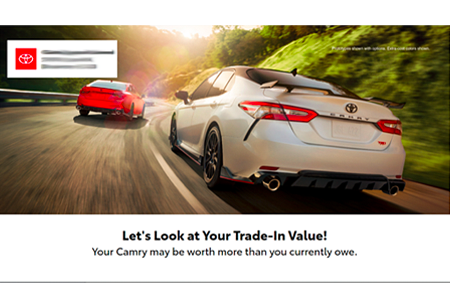How to Interpret the Metrics in Your Fuel Gauge Report
May 30, 2017Each Month, our Fuel Gauge reporting email is sent directly to your inbox, putting the most valuable performance metrics for your DSplus program right at your fingertips!
But where do these metrics come from—and what data should you be focusing on?
Let’s start with the Reach Metrics.
Your Reach Metrics combine your DMS, CRM, and program communication data to show the volume and consumer type you reached last month with DSplus. It shows the total number of current customers reached who have purchased or serviced with you in the past, and the total number of prospects who haven’t previously purchased or serviced at the dealership.
Unique Recipients are the total number of consumers who were reached by your messaging the previous month.
Next, your Engagement Metrics utilize program communication data to display consumer engagement generated the previous month with DSplus. There are a few key metrics to keep track of here.
First, look at total sends, or the total number of emailed communications. This shows just how many emails we’re sending to your consumer database.
From there, the Unique Open Rate and Unique Click Rate tells you the percentage of consumers who opened and clicked on a communication.
You might be wondering — where should this rate fall?
The unique open rate should be between 8-10% and the click rate should be between 16-18%.
That being said, the DSplus team prides itself on the low opt-out rates with our email communications—we strive to keep it at less than 0.5%.
We rely heavily on these numbers because they show how many people are actually engaging with our communications on a monthly basis. Are people opening? Are people clicking? These metrics offer that information.
Fuel Gauge also shows your Financial Metrics which harness DMS and program communication data to demonstrate financial performance from the previous month with DSplus.
While DSplus never takes credit for any sales or service, it’s important for us to understand our connection with the consumer’s journey. Not only are we able to show total linked sales and total linked serviced, but we also break that down to show the number of used, new, and total linked gross profit.
Finally, your Most Likely Buyers Metrics indicate the total in-market buyers from the Most Likely Buyers Report, meaning the total number of consumers who qualified at or above a score factor of 7. These consumers are most likely to be in-market based on their online, offline, and shopping behavior across the web.
The total customers and prospects are DSplus-identified consumers who have or have not previously purchased or serviced at the dealership, but are likely to be in-market.
If you have any questions, feel free to contact us. We love talking metrics!





